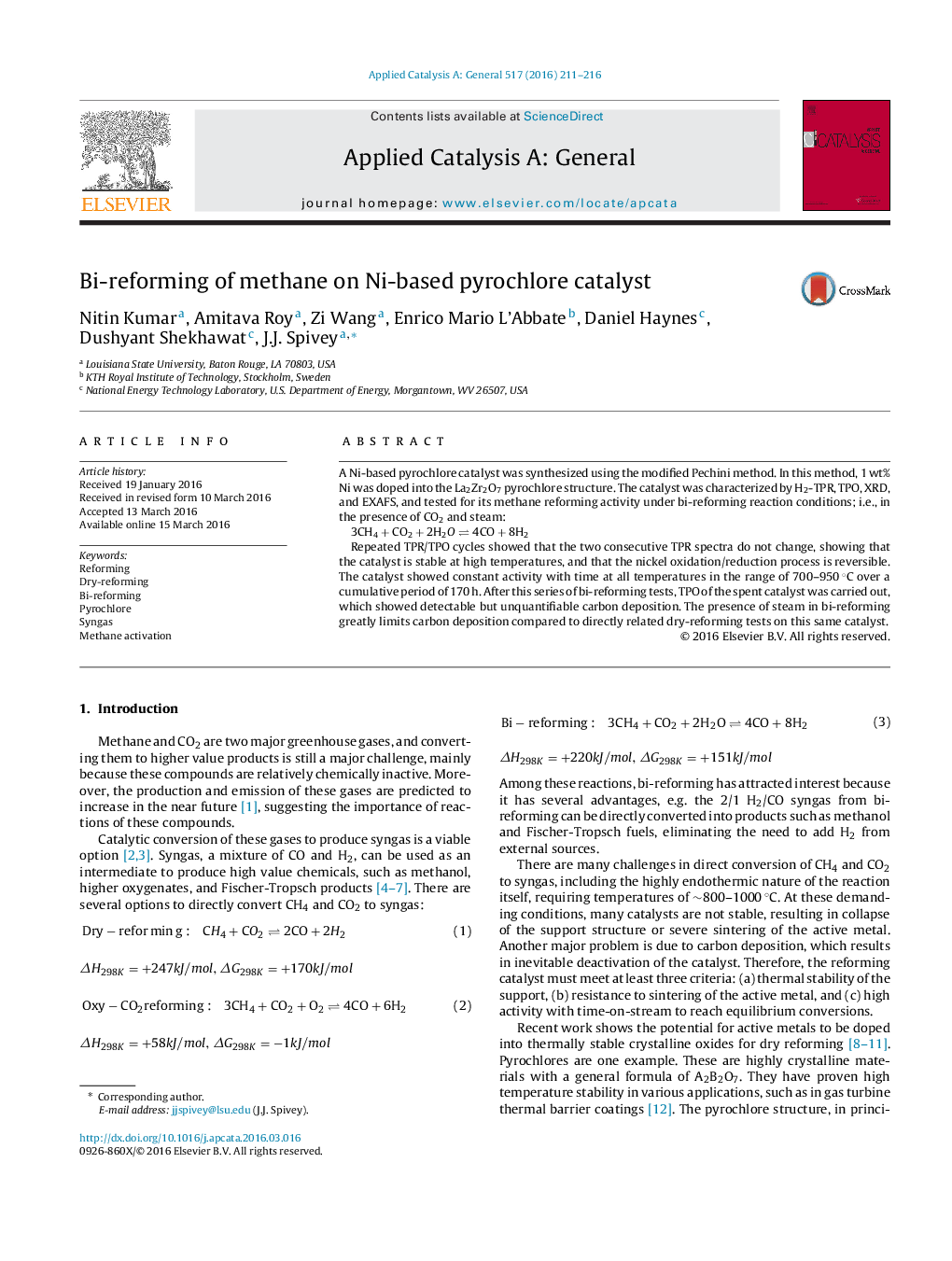| Article ID | Journal | Published Year | Pages | File Type |
|---|---|---|---|---|
| 39107 | Applied Catalysis A: General | 2016 | 6 Pages |
•Ni-based pyrochlore catalysts are promising for bi-reforming reaction.•Catalyst is highly active and selective for production of syngas.•Carbon deposition is significantly reduced in bi-reforming due to steam.•Near equilibrium conversions can be obtained at higher temperatures.
A Ni-based pyrochlore catalyst was synthesized using the modified Pechini method. In this method, 1 wt% Ni was doped into the La2Zr2O7 pyrochlore structure. The catalyst was characterized by H2-TPR, TPO, XRD, and EXAFS, and tested for its methane reforming activity under bi-reforming reaction conditions; i.e., in the presence of CO2 and steam:3CH4+CO2+2H2O⇌4CO+8H23CH4+CO2+2H2O⇌4CO+8H2Repeated TPR/TPO cycles showed that the two consecutive TPR spectra do not change, showing that the catalyst is stable at high temperatures, and that the nickel oxidation/reduction process is reversible. The catalyst showed constant activity with time at all temperatures in the range of 700–950 °C over a cumulative period of 170 h. After this series of bi-reforming tests, TPO of the spent catalyst was carried out, which showed detectable but unquantifiable carbon deposition. The presence of steam in bi-reforming greatly limits carbon deposition compared to directly related dry-reforming tests on this same catalyst.
Graphical abstractFigure optionsDownload full-size imageDownload high-quality image (117 K)Download as PowerPoint slide
